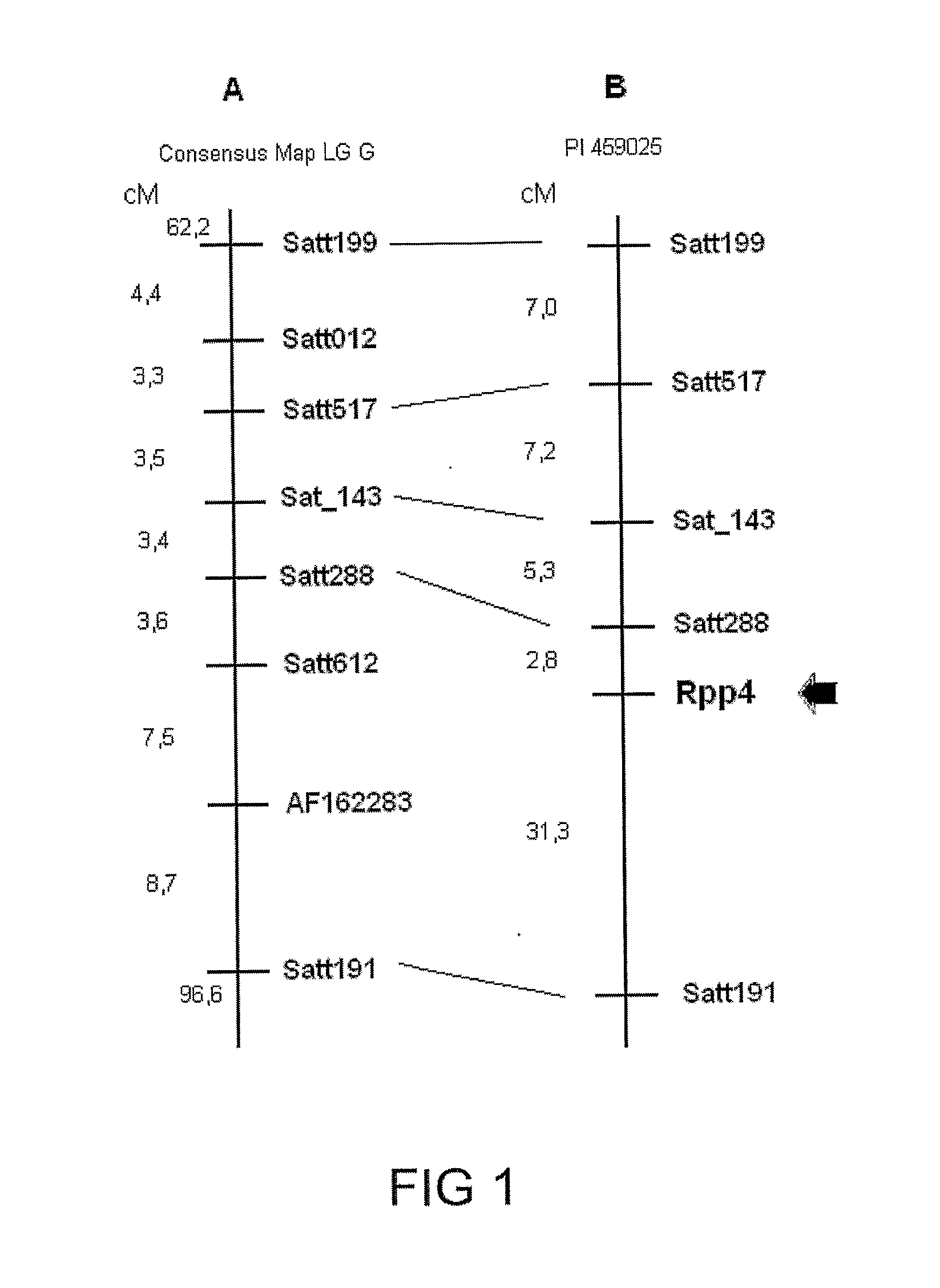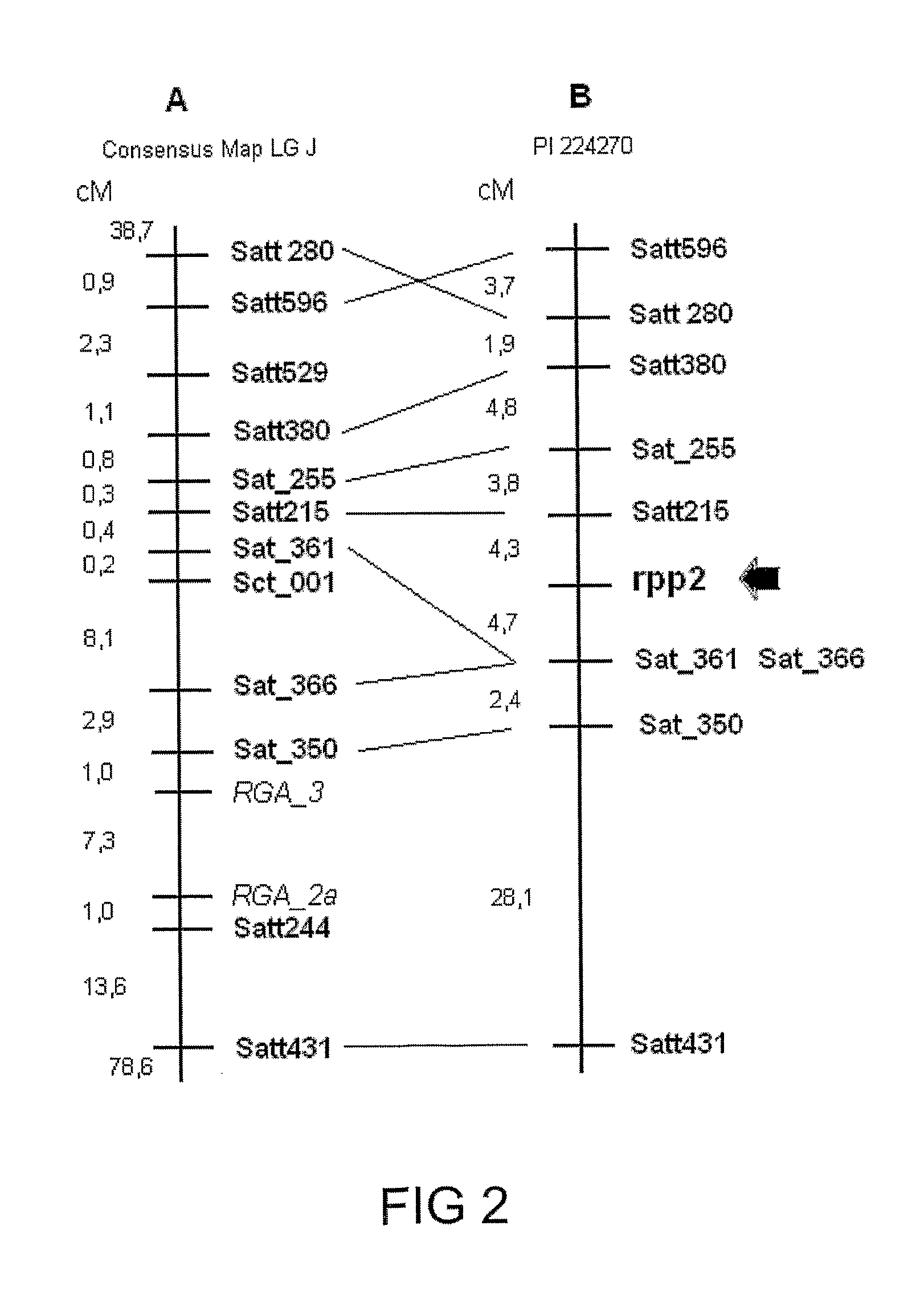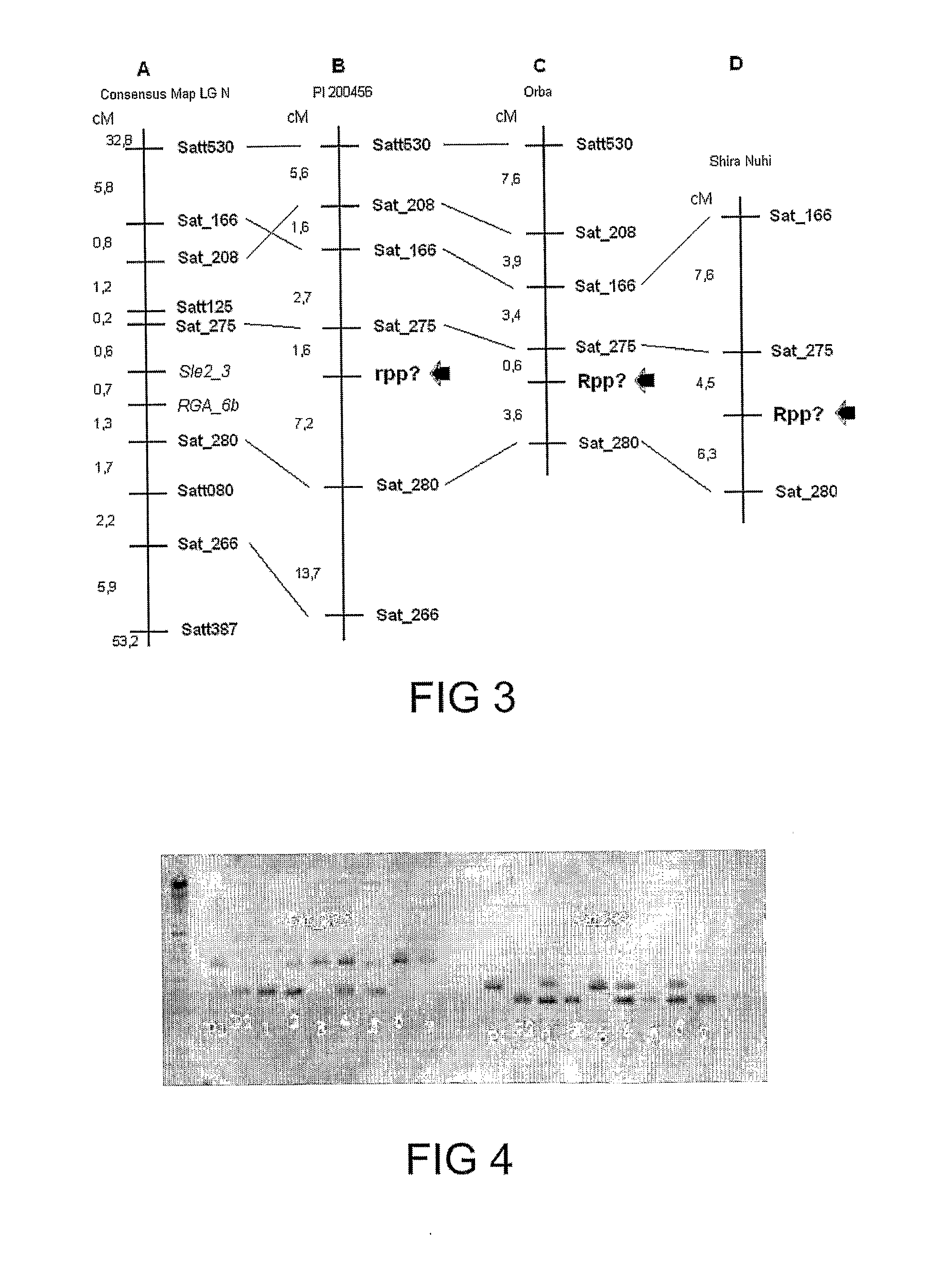Genotypes, alleles and molecular markers associated with asian soybean rust, as well as methods, processes and uses thereof
a technology of asian soybean rust and molecular markers, applied in the field of rust resistance or tolerance screening methods, can solve the problems of not being able to grow segregated populations by backcrossing, affecting the growth rate of new species, and relatively recent domestication of new species
- Summary
- Abstract
- Description
- Claims
- Application Information
AI Technical Summary
Problems solved by technology
Method used
Image
Examples
example 1
[0134]Genetic Improvement—Improvement with Molecular Markers
Material—Plant
[0135]The assays were carried out in a greenhouse, with controlled temperature and humidity. 48 ASR-resistant genotypes were selected. Homozygosis tests for resistance in different genotypes were carried out and 7 genotypes were selected, among which PIs 200487, 200526 and 471904. The source of the Rpp2 gene (PI 230970), of the Rpp4 gene (PI 459025) and PI 200456 and PI 224270, which carry recessive resistance genes, were also used in the present invention. Populations used in the work were obtained from the crossbreeding of each of the sources of resistance with the susceptible cultivar Coodetec 208, used as female parent, but not limited to said cultivar.
[0136]Self-fertilization of F1 plants. About 200 F2 plants resulting from each crossbreeding were assessed as to ASR-resistance. A F2:3 progeny test was carried out to confirm the phenotype and determine the genotype of the F2 plants. The formula n=log(1−P) / ...
example 2
Gene Pyramiding Process
[0149]ASR-resistance is variety-specific, and therefore genotypes carrying only one resistance gene may have their effectiveness overcome within a short period of time. In order to obtain lasting and broad-spectrum resistance, the largest possible number of resistance genes should be gathered in a single material. Said gathering process is known as pyramiding and is facilitated with the aid of distinct molecular markers, genetically linked to the various resistance genes. The use of molecular markers enables the indirect monitoring of the introduction of different genes, which is an arduous and not very precise task when performed only by resistance phenotypic assessment.
[0150]In order to do so, it is necessary to select contrasting parents for resistance genes to the diseases of interest and to identify the varieties of the pathogen of greater importance for the region for which the new cultivars are intended, thus making gene pyramiding a useful process in g...
example 3
Positional Cloning
[0163]Markers linked to each of the QTLs for resistance or tolerance to Asian soybean rust may be used in the positional cloning of the genes. The first step of this process consists of creating a physical map of a contig (contiguous overlapping of cloned DNA inserts) in the genomic region comprising one or more markers of the loci and of the gene of interest. The gene of interest is then identified and isolated in one or more clones present in the contig. Thus, the clone of a gene is obtained, to be used genetic studies, transformation and development of new phenotypes.
[0164]Markers mapped for resistance, especially those which are genetically and physically linked to the QTL or genes of interest are used in the identification of clones from genomic libraries, including, for example, soybean genomic libraries made in bacterial artificial chromosomes (BAC), yeast artificial chromosomes (YAC) or bacteriophage-derived artificial chromosomes. These are the preferred v...
PUM
| Property | Measurement | Unit |
|---|---|---|
| temperatures | aaaaa | aaaaa |
| volume | aaaaa | aaaaa |
| resistance | aaaaa | aaaaa |
Abstract
Description
Claims
Application Information
 Login to View More
Login to View More - R&D
- Intellectual Property
- Life Sciences
- Materials
- Tech Scout
- Unparalleled Data Quality
- Higher Quality Content
- 60% Fewer Hallucinations
Browse by: Latest US Patents, China's latest patents, Technical Efficacy Thesaurus, Application Domain, Technology Topic, Popular Technical Reports.
© 2025 PatSnap. All rights reserved.Legal|Privacy policy|Modern Slavery Act Transparency Statement|Sitemap|About US| Contact US: help@patsnap.com



